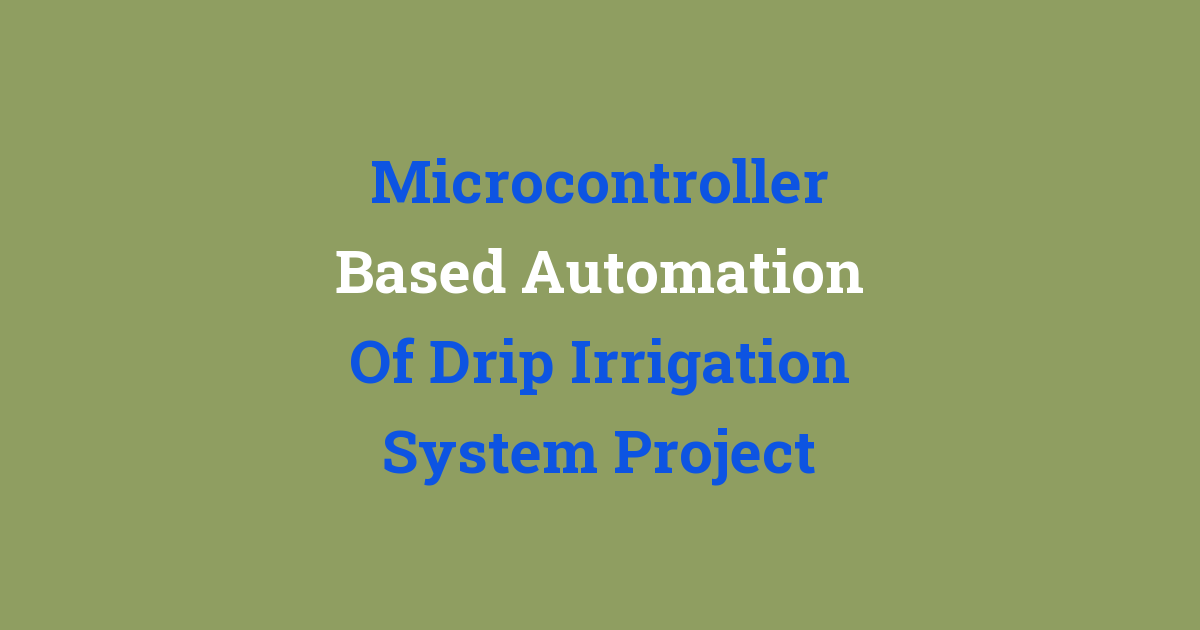Project on automating drip irrigation system using a microcontroller.
Microcontroller Based Automation of Drip Irrigation System Project
Introduction
In recent years, there has been a growing demand for efficient and automated irrigation systems in agriculture to optimize water usage and maximize crop yield. One such system is the drip irrigation system, which delivers water directly to the roots of plants, reducing water wastage and increasing efficiency.
Problem Statement
Traditional drip irrigation systems require manual monitoring and control, which can be time-consuming and prone to human error. There is a need for a more automated system that can adjust watering schedules based on real-time data such as soil moisture levels and weather conditions.
Existing System
The existing drip irrigation systems rely on manual intervention for adjusting the flow of water and setting watering schedules. This can be inefficient as it does not take into account variable factors such as soil moisture levels and weather conditions.
Disadvantages
1. Manual intervention leads to a higher risk of errors in watering schedules.
2. Inefficient water usage due to lack of real-time monitoring and control.
3. Limited ability to adjust watering schedules based on variable factors.
Proposed System
The proposed microcontroller-based automation system aims to address the limitations of the existing drip irrigation systems by utilizing sensors to monitor soil moisture levels, temperature, and humidity. The system will be programmed to adjust watering schedules based on the data collected, providing a more precise and efficient irrigation solution.
Advantages
1. Automated monitoring and control of watering schedules.
2. Real-time data collection for accurate decision-making.
3. Improved water usage efficiency.
4. Increased crop yield due to optimized watering schedules.
Features
The microcontroller-based automation system will include the following key features:
1. Soil moisture sensor: To monitor soil moisture levels and determine watering needs.
2. Temperature and humidity sensor: To track environmental conditions and adjust watering schedules accordingly.
3. Water flow control valve: To regulate the flow of water based on real-time data.
4. LCD display: To provide real-time information on soil moisture levels, temperature, and watering schedules.
5. Microcontroller unit: To process data and control the irrigation system based on pre-programmed algorithms.
Conclusion
In conclusion, the proposed microcontroller-based automation of the drip irrigation system project offers a more efficient and precise solution for agricultural irrigation. By incorporating sensors and a microcontroller unit, the system can automatically adjust watering schedules based on real-time data, leading to improved water usage efficiency and increased crop yield. This project has the potential to revolutionize the way irrigation systems are managed and could have a significant impact on the agricultural industry.

